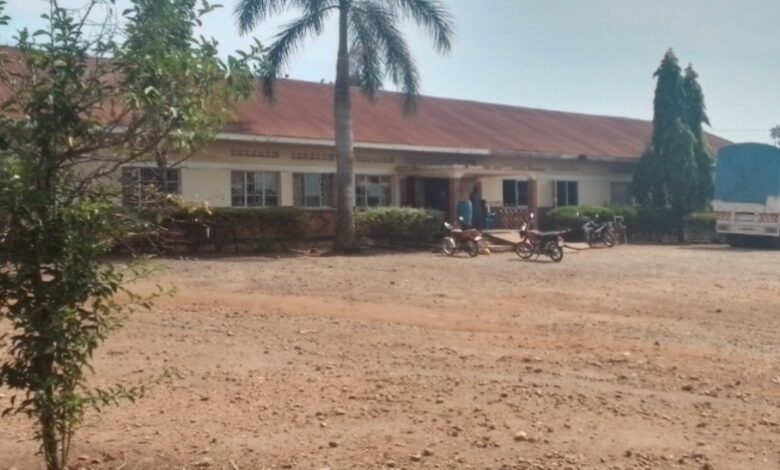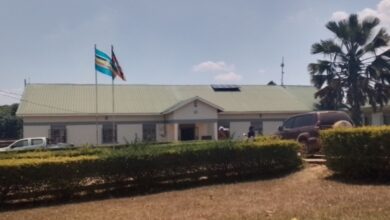Paidha leaders propose relocation of Uganda Prison
Established in the 1990s when truck traffic was minimal, the park is now inadequate for the town’s growing transport needs.

Zombo: Local leaders in Paidha Town Council, Zombo District, have proposed relocating Uganda Prisons Service Paidha as part of the town’s updated physical development plan.
The move aims to repurpose the prison’s 20-acre site for future development, with proposals to establish a hospital and a golf course.
The proposal emerged during a review of the Paidha Town Council Physical Development Plan 2025–2035 on March 17, 2025, at the Paidha Cultural Center.
The meeting brought together councilors, technocrats, and officials from the Ministry of Lands, Housing, and Urban Development to discuss the town’s spatial planning priorities.
LCIII Chairperson Innocent Godfrey Onega confirmed that the prison would be relocated to Paidha Sub-County, while the town’s lorry park would shift to Oturgang Ward.
“These changes are part of a broader effort to modernize the town, which has struggled with delayed implementation of its physical development plan since its elevation to a town board in the 1990s,” Onega noted.
Paidha, a bustling border town with a population exceeding 40,000, plays a vital role in cross-border trade with the Democratic Republic of Congo. The town’s new development plan aims to address infrastructure, housing, and public amenities.
Lorry park disposal sparks debate
One contentious issue in the plan is the proposed sale of the lorry park, located in the heart of Paidha.
Established in the 1990s when truck traffic was minimal, the park is now inadequate for the town’s growing transport needs.
“We believe the lorry park can’t be expanded to accommodate more lorries,” Onega explained, suggesting its conversion into a more suitable development.
However, disposing of the lorry park must follow the Public Procurement and Disposal of Public Assets Regulations, 2023. The process involves submitting a formal request, followed by public bidding advertised in national newspapers.
LCIII aspirant Amos Jacan supported the disposal, provided legal guidelines are followed.
“If we can use the law to establish a new lorry park elsewhere, it would be prudent,” he said.
A councilor, speaking anonymously, emphasized transparency in the process:
“The issue isn’t opposition to development—it’s about following necessary procedures. Selling government property without due process won’t work.”
Community engagement and challenges
The council has been engaging residents to raise awareness about the development plan, which includes new roads, recreational facilities, markets, schools, health centers, and police posts.
However, resistance persists, with many residents constructing buildings without consulting the town’s physical planning department. Political interference has also hindered progress, with some leaders prioritizing short-term interests over long-term planning.
A facilitator from the Ministry of Lands urged leaders to keep politics out of the process:
“Your proposals will shape this town for years to come. Keep politics out of it.”
Engineering and planning considerations
From an engineering perspective, relocating the prison and lorry park aligns with efforts to optimize land use.
The proposed hospital and golf course on the prison site will require feasibility studies to assess terrain, drainage, and utility connections. Similarly, relocating the lorry park to Oturgang Ward demands careful planning for road access, traffic flow, and structural capacity to accommodate heavy vehicles.
Town Clerk Desmond Odota stressed the need for collaboration between leaders, the community, and technical experts to ensure effective implementation.
The council also aims to improve Paidha’s deteriorating housing stock through better planning standards.
Legal framework and national context
The Physical Planning Act 2010 designates Uganda as a planning area, requiring all developments to comply with approved plans. The law ensures consistency in national, regional, and local development strategies.
Swaib, a physical planner from the Ministry, praised Paidha’s initiative:
“This aligns with the Physical Planning Act and will optimize resource use.”
However, the Ministry highlighted a broader challenge: many local governments lack comprehensive guidelines for planning processes, leading to inconsistencies.
Paidha’s reviewed plan will undergo further evaluation by the Ministry, testing the council’s ability to balance ambition with practical implementation.
Looking Ahead
There is optimism that the 2025–2035 Paidha Physical Development Plan will enhance infrastructure, the economy, and overall living conditions. However, its success hinges on overcoming community skepticism, political obstacles, and procedural hurdles.
For now, Paidha’s leadership faces a crucial test turning vision into reality.
Do you have an advertisement or article you want to publish? Mail us at theugreports@gmail.com or WhatsApp +256757022363.






